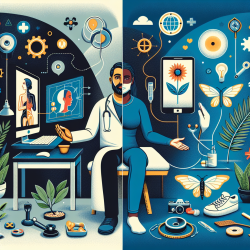- NSS were present in both inattentive-hyperactive and impulsive-hyperactive types of ADHD.
- Children with severe ADHD showed more errors in timed movements, such as dysrhythmias and overflow movements.
- Age plays a significant role; the severity of NSS decreases as children grow older.
1. Comprehensive Assessments
Utilize tools like the Revised Physical and Neurological Examination for Soft Signs (PANESS) to assess motor speed, balance, and coordination. Regular assessments can help track progress and adjust treatment plans accordingly.
2. Individualized Treatment Plans
Given that NSS severity correlates with ADHD severity, tailor interventions to address specific motor and sensory deficits. For instance, children with severe ADHD may benefit from therapies focusing on improving motor coordination and reducing dysrhythmias.
3. Continuous Monitoring
As NSS tend to decrease with age, continuous monitoring can help identify whether improvements are due to natural maturation or effective intervention. This can guide long-term treatment strategies.
4. Collaboration with Educators
Share findings and treatment plans with educators to create a supportive learning environment. Teachers can incorporate motor skill exercises into daily routines to reinforce therapeutic interventions.
Encouraging further research in this area is also crucial. Understanding the long-term impact of NSS on academic and social outcomes can help refine treatment approaches and improve quality of life for children with ADHD.To read the original research paper, please follow this link: Neurological soft signs in children with attention deficit hyperactivity disorder.









